Похожие презентации:
Week 3. Training Subject Teachers in CLIL
1.
Week 3Training Subject Teachers in CLIL
2. Teacher knowledge, skills and dispositions
Day 1 Session 1TEACHER KNOWLEDGE, SKILLS
AND DISPOSITIONS
3. Teacher knowledge, skills and dispositions
Day 1 Session 1TEACHER KNOWLEDGE, SKILLS
AND DISPOSITIONS
4.
Look at the next slide describing differentcontexts for CLIL……
• Which one is closest to the situation
envisaged for Kazakhstan in the new
curriculum ?
5.
6. Teacher knowledge and understanding
• teacher language proficiency• pedagogical content knowledge
• pedagogical knowledge
• curricular knowledge
• understanding of effective use of technologies
• awareness of group processes and dynamics
• grasp of effective evaluation processes and methods.
Rank these in order of significance for producing effective
CLIL subject teachers in Kazakhstan?
7. Teacher skills
- general classroom skills- CLIL language classroom skills in addition to skills as a
subject teacher
managing learner skills development
use of classroom language e.g. modelling
language awareness/ identifying learner needs
managing learner assimilation of L2 /scaffolding
- wider professional skills
• IT skills / use of multimedia
8. Teacher dispositions
• attitude to being co-opted into CLIL situation• perception of teaching transferable skills through
content
• appreciation of the diversity and multi-culturality of
learners
• commitment to promote the learning of all learners.
9. The structure of the training programme
Step 1:raise teacher language competence to B1
Step 2:
begin to explore classroom language for
delivering subject content
Step 3:
develop skills in language teaching and CLIL
teaching basics
Handout 1
10. Watch this video clip……
• What does it suggest about CLIL and thelearning pyramid?
11. CLIL Quotation
CLIL is unique in that it allows learnersand teachers of CLIL to learn both
language and real-world content and
skills. Learners learn their subject
content and teachers learn some
language teaching basics. Done in the
right way this should be highly
motivational for all
12. Core Principles of CLIL Raising awareness of language Across the curriculum
Day 1 Session 3CORE PRINCIPLES OF CLIL
RAISING AWARENESS OF LANGUAGE ACROSS THE
CURRICULUM
13. A paradox
In subject matter learning we overlookthe role of language as a medium of
learning, and in language learning we
overlook the fact that content is being
communicated.
Mohan, 1986
14. What is CLIL?
Content and Language IntegratedLearning ……….
is not a panacea but an alternative
means to providing opportunities for
students to use language to learn
rather than learning to use languages
which is the core task of language
lessons.
Using language to learn as well as learning to use language
15. A model for integration in CLIL
contentlanguage
16.
A 4Cs Approach to Integrated Curriculum PlanningCommunication
Culture
CL L
I
Content
Cognition
Teaching and Learning through a foreign language
17.
ReconceptualisingLanguage Learning
Language of learning
(Foreign) Language
Learning
Language for learning
Language through learning
18.
19.
20.
21.
22. To succeed in TKT CLIL trainees will have to have some of this methodological understanding
1 CLIL isA about learning a new language quickly
B a method for thinking in English
C an approach with many different methodologies
2 One of CLIL’s aims is to
A improve the L1
B increase learner confidence in using grammar
C provide cognitive development for learners
3 In the CLIL classroom, BICS helps learners
A use ICT across the curriculum
B develop basic conversational language
C improve their thinking skills
23. An interactive text
Jeans are trousers traditionally made fromdenim, but may also be made from a variety of fabrics
including cotton and corduroy. Originally work clothes, they
became popular among teenagers starting in the 1950s.
Historic brands include Levi's and Wrangler. Today Jeans are
a very popular form of casual dress around the world and
come in many styles and colors. The earliest known precursor for jeans is the Indian export of a thick cotton cloth,
in the 16th century, known as dungaree. Dyed in indigo, it
was sold near the Dongarii Fort near Mumbai. Jeans were
first created in Genoa. The first denim came from Nîmes,
France.
24. Organisation of knowledge an ‘ideational framework’
JeansHistory
people
brands
Levi's
Wranglers
places
materials
denim
cotton
corduroy
colours
styles
25. ‘Jean’ language
made from/made of
a variety of
popular among
form of
earliest known
pre-cursor for
known as
dyed in
first created in/by/as
passives
denim
cotton
corduroy
historic
brand
casual dress
style
dungarees
indigo
for describing a manufacturing process
reduced relative clauses
26. So vocabulary is key …. sample Maths lesson What is the difference between these groups of words ?
circle circumferencediameter
Identify
calculate
sharp rise
small increase
Five types
of words
explain your
workings
line
about
centre
across
size
many
27. Five groups
• Group 1 : content-obligatory or subject-specific languagee.g. circumference
• Group 2: content-compatible or general vocabulary used
in Maths e.g. circle
• Group 3: academic task and text language e.g. identify
• Group 4 : high and medium frequency words used across
the curriculum e.g. about
• Group 5: collocations used in particular ways when we
present curricular concepts e.g. sharp rise
Can you find examples of each type of language in these CLIL materials ?
Handout
28. Functional language in instructions and tasks is also key
• Lets do two functional tasks that you mightdo with your trainees … one more
introductory… the other asking them to
reflect on their own subject situation.
29. For success in TKT trainees will need basic language awareness as in this task
• Examples of language• Language Forms
A reporting verb
1 The new bridge won’t be finished until next summer
B modal verb of possibility
2 The data will be clearer if you use a spreadsheet
3 There might be a weaker exchange rate in the future
C imperative
4 The lab technician explained to the safety rules to the class
D modal verb of obligation
5
The habitat around the pond is slowly changing
6 To find the perimeter of the rectangle, add the length or the
four sides, don’t multiple them.
E present tense
F passive
G conditional
30. Session 1 Communication Across the curriculum
Day 2SESSION 1
COMMUNICATION ACROSS THE CURRICULUM
31.
32.
33. CLIL video viewing
• Teacher Language• Learner Language
• https://www.youtube.
com/watch?v=ARuag4
WzDDs
• Clip
• 9.11 – 12.08
34. Group Dynamics
Pair work S↔SGroup work Ss↔Ss
Open class, teacher leading T→Ss
Individual help / feedback T→S
Whole-class feedback,
brainstorming
Ss→T
Individual work S S S
Handout
35. Who says what and why
TeacherLearner
Both
Handout
36. TKT CLIL Communication Task
PURPOSE OF COMMUNICATION
• LEARNERS’ LANGUAGE
A to hypothesise
1 You can see the function keys at the top of the keyboard
B to check information
2 There are some things an employer can’t do, such as employ
children of our age.
C to define
3
I don’t think we’ve used the right equation.
4
The sculptures are realistic, but the paintings are abstract
5
I know! A pentagon is a 2-D shape which has five sides.
6
The chemicals would not have reacted because there was no
catalyst.
D to describe location
E to contrast
F to give an example
G to evaluate work
37. Session 2
Day 2SESSION 2
38. In the literature about curriculum and our methodological response, there’s a profusion of new literacies under discussion
the ability tomine new information and interact
constructively with it
constellation of behavioural
dispositions and self-perceptions
concerning one’s ability to
recognise, process, and utilise
emotion-laden information
Information
Literacy
Emotional
Literacy/
Media
Literacy
Intelligence
New literacies
ICT/digital
Literacy
News
Literacy
Visual
Literacy
the ability to interpret, negotiate, and
make meaning f rom information presented in the
form of an image
39. Broad C21st skills definition
ways ofthinking
ways of
working
C21st
skills
ways of
living
tools for
working
40.
PEDAGOGIC THINKING AND C21ST SKILLS• Factual knowledge
• Conceptual knowledge
• Procedural knowledge
Critical and
creative thinking • Meta-cognitive knowledge
Information
Technology
• IT and ICT skills
• Digital Literacy
• Organisation skills
• Communication and collaboration skills
Interpersonal and • Citizenship
Social Awareness
41.
Possible Critical and Creative Thinking Skills Matrixanalysing
Factual
Conceptual
Procedural
Metacognitive
reasoning
problem - evaluating possibility creative
solving
thinking
thinking
42.
analysing reasoning problem evaluating possibility creative- solving
thinking thinking
IT and ICT skills
Digital Literacy
43.
analysingOrganisation
skills
Communication
and
collaboration
skills
Citizenship
Handout
reasoning
problem - evaluating
solving
possibility
thinking
creative
thinking
44.
21st Century Skills – Infusion across thecurriculum
Multi-layered tasks which involve higher-order cognition processes in one
or more elements of the task and are completed through task stages
which involve high doses of
Communication
Organisational
skills
Information
Literacy
and thus allow for a clear focus on soft skills development
45.
Skills Infusion Model46. Thinking Skills and Task Rubrics
• To ensure teachers are developing a rangeof thinking skills, they need to vary the
tasks and rubrics they use
47. Learning Skills Across the Curriculum
• Lets do three tasksReading Skills focus
Sub-skills
Learning skills across the curriculum
Handouts
48. TKT CLIL Cognition and Learning Task
PredictingA What could happen if the amounts are wrong?
B Scan the article and find when the building will be completed
C With a partner, guess which equipment we will not need for the experiment
Reasoning
A Label the electrical components in the picture and then copy the circuit diagram
B Look at the animals and decide how you could group them in a Venn diagram
C Study the life cycle of a flowering plant and then decide how the seeds germinate
Sequencing
A Place these machines on a timeline to show when they were invented
B Agree which jobs in ancient Egypt are similar to jobs today
C Look at the events leading to the war and decide how one followed the other
49. Session 3 Teacher and Trainer Questioning
Day 2SESSION 3
TEACHER AND TRAINER QUESTIONING
50. Questions for teachers to think about.
• Why are questions crucial in all learning ? What specificextra purpose do they serve in CLIL classrooms?
• How can we categorise types of classroom question?
• What are crucial features in differentiating questions?
• How can Ts vary question interaction patterns?
• How and when do teachers correct answers?
51. Teachers typically ask between 300-400 questions per day
Questioning is crucial in:managing the class
engaging students with content
encouraging participation
increasing understanding.
promoting formative assessment.
The quantity of questions asked needs to be
considered in relation to:
• general time constraints
• keeping teacher talking time to a minimum
• their effectiveness in maximising learner contributions.
52. EFL: Types of questions
displayreferential
probing
convergent
concept
procedural
hypothetical
divergent
53. Put the question types on this line
LessMore
Explain to your partner when you ask each
type of question in class.
Give an example for each one
54. Language teacher questions
convergent questionhypothetical question
probing question
procedural question
display question
divergent question
concept checking question
referential question
to move lesson stages/activities along
to elicit a range of learner language
to check learners have understood
to explore learner answers further
to focus on language meaning and forms
to promote learner speculation
to elicit a simple correct answer
to elicit something the teacher does not
know answer to.
55. Let’s what two CLIL video clips and note the type of questions used
• https://www.youtube.com/watch?v=dFuCrx
Robh0#t=476.920447
• Clip 2
11.47 to end
• Clip 1
Answer why these teacher doesn’t
use many questions ?
• 9.18 – 11.47
What’s the final thinking skill ?
Note the type of questions used by this
teacher
56. Let’s teacher practice questions around a CLIL piece of material
57. Trainer Questions
Do trainers ask different types of ?’s ?• Yes or no ? If yes can you add to the list.
58. Training room sub-skills
Trainer questioningplanning the questions to be asked
writing out the key questions
wording questions appropriately
asking concise and specific
questions
• using participants' existing
knowledge
• asking relevant questions
• asking questions in a logical order
• varying the manner of asking
questions
• asking questions in a nonthreatening manner
• allowing enough time for
participants to think
• rephrasing questions for clarification
• following-up on participants '
answers
• acknowledging the participants and
their answers
59.
Prepare questions relating to these different CLIL slides wehave seen
• Slide 1 Principles of CLIL
• Slide 2 CLIL Language
• Slide 3 CLIL
60. Raising Awareness of Classroom Language
Day 3RAISING AWARENESS OF
CLASSROOM LANGUAGE
61. In CLIL classroom practice
Learners are empowered.The TEACHER is no longer
the DONOR of knowledge,
rather he/she is a FACILITATOR
They are actively engaged.
They use
PERCEPTION
COMMUNICATION
REASONING
as individuals and as a group of
peers
62. Classroom language
Eliciting / reviewing information and
previous knowledge
Setting up an activity /Giving instructions for
an activity
Getting everyone’s attention
Simple commands
Giving out / taking in work
Checking understanding
Encouraging students
Setting homework / assignments
Handout
• Take one and pass them on.
• Have a guess.
• Prepare the next two pages for
Monday.
• So what’s the difference then ?
• When you finish you can…
• Who can tell me …?
• Does anyone remember …?
• Turn to page ...
• Can you 4 team up?
63. Classroom instruction sequencing
• Let’s do a task• Instructions
Handout
64. Using lots of video input……
• …adds context to explanations andinstructions
• …also provides CLIL teachers with input to
recycle in questioning/modelling
https://www.youtube.com/watch?v=rRTkGFyixuA
https://www.youtube.com/watch?v=-8TmAOp38_k&list=PLZNPUAgUMhUq-PrtLPosLR7N_KJc3aYZ&index=2
65. A CLIL Lesson – Teacher Language Aim: to identify, locate and describe the functions of a range of plant and human organs
Identifying/naming
This is a/the …
That’s the …
This is called a/the …
It comes from a …
At the top of the … there is a (adj)
part called the ….
Together, the … and the … are
called the ….
Describing
appearance/structure
It looks like …
It’s got/hasn’t got …
It has/doesn’t have …
All … have …, a …, and ….
… and is shaped rather like a …. …
and is divided into two parts.
The top of the … is called the ….
A long tube grows out of the …,
this is the ..
Describing location
It is found in the … of the …
The … are found at the base of
the ….
They are (adj.) and are
attached to the ….
The .. is attached to the bottom
of the .. by a
They are inside the ….
Describing function
The … is the part which …
The … is where … is carried out
The … is used for …-ing
The …’s job is to …
It does … the …-ing
66.
67. But remember… let the visuals do some of the work
68.
69.
70. TKT CLIL Task
1 We can use a Venn diagram toA brainstorm facts about ocean ecosystems
B write down our opinion about how to solve ocean pollution
C look at similarities and differences between the Atlantic and Pacific oceans
2 We can use a cause-effect visual organiser to
A show what happens if we live an unhealthy lifestyle
B explain the stages of the life cycle
C record the number of people who do different types of exercise
3 We can use a flow chart to
A describe spreadsheets and databases
B show the differences between two chemicals
C explain the stages of a farmer’s year
4 We can use a Carroll diagram to
A identify musical instruments used in orchestras
B group instruments according to what they are made of and how they are played
C compare and contrast the names of musical instruments from around the world.
71. Session 2 Scaffolding
Day 2SESSION 2 SCAFFOLDING
72.
73. Scaffolding
Language and Learning• You can scaffold both the language as well as the learning process of
students.
• Scaffolding a language can be done by providing language frames or
example sentences.
• Scaffolding learning can be done by providing the step by step
instructions for the task ahead. This can also be an example exercise.
74.
75.
76.
77.
78. Properties of well-scaffolded CLIL materials
• Handout79. Types of visual organiser scaffolding
• Handout matching task80.
81.
82.
83.
84. Lets do a scaffolded input and scaffolded output task
• Handouts85. Listening input/output challenges and grading
Modifying MaterialsListening input/output challenges
and grading
length of text
language in text
sentence length
number of distractors
picture support
language needed for answers
86. Two of the statements are correct. One is not. Which one?
1 Making links between two historical sources helps learners developA thinking skills
B language skills
C practical skills
2 Demonstrating how to measure angles accurately helps learners
A visualise what they have to do
B focus on the classroom language
C develop evaluating skills
3 Using a visual organiser to record the causes and effects of coastal erosion helps learners to
A connect facts about erosion
B compare and contrast different types of erosion
C focus on key content vocabulary related to erosion
4 Breaking down a long reading task about technical instruments into small steps helps most learners to
A summarise the content of the text
B think more carefully about the text
C understand the content of the text
87. Session 3 Evaluating CLIL Science Materials Observing and evaluating clil lesson sequences
Day 3SESSION 3
EVALUATING CLIL SCIENCE MATERIALS
OBSERVING AND EVALUATING CLIL LESSON SEQUENCES
88. What should we ask about CLIL materials?
Are the materials-
appropriate for the age of the learners and the s _ _ _ _ of learning ?
fit for p _ _ _ _ _ _ . Do they match the learning o_ _ _ _ _ _ _ ?
linked to CLIL a _ _ _? Do they consider content, communication, c _ _ _ _ _ _ _ _ ?
progressive in subject content, language, cognitive demands and t _ _ _ demands ?
supportive? Do they have word banks, language f _ _ _ _ _ and visuals?
varied in skills, tasks and i _ _ _ _ _ _ _ _ _ _ ?
collaborative, motivating, challenging and a _ _ _ _ _ _ _ _ _ ?
89. Context-embedded
• Inset diagram90. Types of resource in science
Lab demos
Topic tutorials
Virtual Labs
Maths for science
http://global.oup.com/uk/orc/biosciences/maths/jordan/01student/exercises
• CLIL resources
• UK/US mainstream resources
91. CLIL Resources
The CLIL Compendiumwww.clilcompendium.com
Euroclic
www.euroclic.net
Translanguage in Europe
www.tieclil.org
UK National Centre for languages
www.cilt.org.uk
NILE
www.nile-elt.com
FACT
www.factworld.info/uk
http://eclil.uws.ac.uk/?option=com_content&view=article&id=47&Ite
mid=62
92. Selecting Criteria from observation sheets
• General classroomobservation criteria
• CLIL classroom
materials / lesson
observation criteria
93. DVD observation lesson
Biology CLIL lesson• https://www.youtube.com/watch?v=ARuag
4WzDDs
• Almaty Biology lesson
94. TKT CLIL task HW
• Handout95. Planning CLIL Lessons
Day 4 Session 1PLANNING CLIL LESSONS
96. Labels in CLIL Planning
Most learners…………• should know…
• be able to…
• be aware of ….
What do these three headings which appear in many CLIL plans focus on?
97. Key questions in planning
• What are my teaching aims?• What new things will learners know and be able to do at
the end of the lesson?
• Which content is being revisited and which is new?
• What communication is taking place?
• What thinking and learning skills are being developed?
• What language support needs to be provided?
• What task learning support needs to be provided?
• How will learning be evaluated?
98. Look at the lesson plan on the handout
• Are all the planning points covered?• Where are they covered?
99. Look at this second plan
• Evaluate it in terms of Westhoff’s Penta-Pieon the next slide
Does the lesson plan touch on each area ?
100.
MEANINGfocussed
processing
Exposure
to INPUT
FORM
focussed
processing
OUTPUT
production
Westhoff’s
Penta-pie (2004)
Use of
STRATEGIES
101. TKT CLIL Planning Task
• Find a Science CLIL lesson plan in aninternet search.
• Does it have features you would want to
integrate into the two plans we have seen?
Prepare a slide to show the group features you like.
102. Session 2 Assessment in CLIL
Day 4SESSION 2 ASSESSMENT IN CLIL
103. What do these assessment terms mean ?
a diagnostic test
competences
standardised tests
performance assessment
grading
summative assessment
self-assessment
formative assessment
criteria
‘can do’ statements
Hand-out
104.
105.
106.
107.
108.
109.
110. Formative Assessment : Observation
• Which of the performance competenceswould you tick for the learners in the
video?
• https://www.youtube.com/watch?v=ARuag
4WzDDs
Handout
111. Look at the handout
Identify the main conceptual, procedural andlanguage demand in each one.
112. Ways of reducing the language barrier in CLIL assessment?
• Look at the CLIL assessment types on thehandout and rank them of linguistically
most challenging to linguistically least
challenging.
Handout
113. Cambridge English Key & preliminary
Day 4 Session 3CAMBRIDGE ENGLISH
KEY & PRELIMINARY
114.
Key / Preliminary LevelsCambridge English Exams
Council of Europe Levels
Cambridge English Proficiency
Mastery
C2
Cambridge English Advanced
Effective Proficiency
C1
Cambridge English First
Vantage
B2
Cambridge English Preliminary
Threshold
B1
Cambridge English Key
Waystage
A2
115. Key Reading & Writing Tasks
Key Reading & Writing TasksTask Type
No. of questions
Part 1
Matching
5
Part 2
3-option multiple choice
5
Part 3
3-option multiple choice
10
Part 4
Right / wrong / doesn’t say
8
Part 5
Multiple choice cloze
8
Part 6
Word completion
5
Part 7
Open cloze
10
Part 8
Information transfer
5
Part 9
Guided writing
1
116. Preliminary Reading & Writing Tasks
Preliminary Reading & Writing TasksTask Type
No. of questions
Reading Part 1
3-option multiple choice
5
Reading Part 2
Matching
5
Reading Part 3
True / False
10
Reading Part 4
4-option multiple choice
5
Reading Part 5
4-option multiple choice cloze
10
Writing Part 1
Sentence transformation
5
Writing Part 2
Guided short message
1
Writing Part 3
Continuous writing
choose 1 of 2
117. Key Guided Writing Task - Part 9
“You have a new pen-friend. Write a note to yourfriend telling about your hometown.
Say:
– where your hometown is
– what you like best about it and why
Write 25 - 35 words.”
118. Sample Answer; KEY writing
Dear Sam,Here is my town, Marina de Pisa. It is a
seaside resort near Pisa. It isn’t very big, but I
think it is so nice! The nicest part of Marina is
the seaside front.
On summer holiday, in the evening, I go
always there!
Francesca
119. Preliminary Writing Part 2
“Your friend Alex couldn't go to your English classtoday because of a bad cold.
Write an e-mail to Alex. In your e-mail, you
should
• ask about Alex's cold
• say what you did in the English class
• tell Alex about the English homework.
Write 35–45 words on your answer sheet.”
120. Sample answer PET Writing Part 2
Hello Alex,Is that cold of yours very bad?
Mr Simon, our teacher, was twenty minutes
late. When he arrived he told us to do a test.
For homework we have to read the whole of
page 20 in our textbook.
Get better soon, Guido
121. Preliminary Writing Part 3
• Topic-based (story or letter)• Extended writing: about 100 words
• Candidates should show ambition
• Assessment focuses on language
122. Preliminary Writing Task Samples
Preliminary Part 3 Sample 1Your English teacher has asked you to write a story.
Your story must have the following title:
The most important day of my life
Write your story in about 100 words on your answer sheet.”
Preliminary Part 3 Sample 2
This is part of a letter you receive from an English penfriend.
“I’ve just bought some new clothes at the local market. Do you enjoy
shopping for clothes? Tell me about the clothes you like to wear and
the best places to buy them.”
Write your letter in about 100 words on your answer sheet.”
123. Reading and Writing Skills
What are some important readingand writing skills to develop for
language learners?
124. Reading Skills
1. Predicting: Making use of clues to aid comprehension2. Skimming: Understanding gist
3. Scanning: Understanding relevant details
4. Interpreting: Telling main points from secondary points
5. Interpreting: Distinguishing fact from comment
6. Coping: Getting meaning from text that contains unknowns
7. Coping: Using appropriate aids
125. Writing Skills
1.Linking ideas: Making use of linking words and conjunctions: “Because my parents
said they would take my friend and I to the zoo we were happy, but it rained, so we
were disappointed.”
2.
Subject-verb agreement: Particularly in longer sentences: “Tigers were once found
throughout Asia but are now quite rare.”
3.
Proper use of pronouns and determiners: “My parents promised my sister a
present, but when she failed her exams, they changed their minds.”
4.
Cohesive Devices: Expressions used to make the writing more coherent: first,
then, next, as a result, on the other hand
126. Key Listening Tasks
Task TypeNo. of questions
Part 1
3-option multiple choice
5
Part 2
Matching
5
Part 3
3-option multiple choice
5
Part 4
Gap fill
5
Part 5
Gap fill
5
127. Preliminary Listening Tasks
Task TypeNo. of questions
Part 1
Discrete multiple choice
7
Part 2
3-option multiple choice
6
Part 3
Gap fill
6
Part 5
True / False
6
128. Listening Skills
What are some important listeningskills to develop for language
learners?
129. Listening Skills
1. ‘Tuning in’ to the situation (activating schema)2. Feeling comfortable with different accents
3. Distinguishing between separate words
4. Distinguishing key information
5. Ignoring unimportant information
6. Predicting what words or phrases you will hear
7. Recognizing intonation for questions, emphasis, etc
130.
Key SpeakingPart 1
Interview 5 – 6 minutes:
examiner - candidate
Part 2
Information exchange 3 – 4 minutes: candidate - candidate
131.
Preliminary SpeakingPart 1
Interview 2-3 minutes:
examiner - candidate
Part 2
Collaborative task 3 minutes:
candidate - candidate
Part 3
Individual long turn 3 minutes (1 minute each):
candidate - examiner
Part 4
Discussion 3 minutes:
candidate - candidate
132. Speaking Skills
What are some important speakingskills to develop for language
learners?
133. Speaking Skills
1.Giving factual, personal information
2.
Giving factual information of a non-personal kind related to daily life
3.
Making and responding to suggestions and recommendations
4.
Discussing alternatives and negotiating agreement
5.
Describing scenes / photographs
6.
Managing discourse
7.
Giving opinions, talking about likes/dislikes, preferences
8.
Defending / explaining opinions
9.
Talking about experiences, habits, etc.
134. KEY – CEFR Level A2:
• Able to convey basic meaning in very familiar or highlypredictable situations
• Utterances tend to be very short with frequent hesitations and
pauses
• Dependent on rehearsed or formulaic phrases
• Limited generative capacity
• Only limited extended discourse
• Pronunciation heavily influenced by L1, can be difficult to
understand
• Requires prompting or assistance to prevent communication
from breaking down
135. Preliminary – CEFR Level B1
• Able to handle communication in most familiar situations• Able to construct longer utterances but not able to use complex
language except if well rehearsed
• Problems searching for language resources results in pauses and
hesitations
• Pronunciation generally intelligible but L1 influences may put a
strain on listener
• Has some ability to compensate for communication difficulties but
may require prompting or assistance
136.
Speaking Assessment CriteriaKEY
PRELIMINARY
Grammar and Vocabulary
Grammar and Vocabulary
Pronunciation
Pronunciation
Interactive
Communication
Interactive Communication
Discourse Management
137. Video Clips
1. Key Speaking Test2. Preliminary Speaking Test
138. Grading and Results
• Each skill weighted equally• No minimum pass mark on individual papers
• New ‘Enhanced Certification’
• Pass = Approx. 70% of total marks
• Candidates given Statement of Results
• http://www.cambridgeenglish.org/images/282432-cambridgeenglish-preliminary-sample-statement-of-results-scale.pdf
























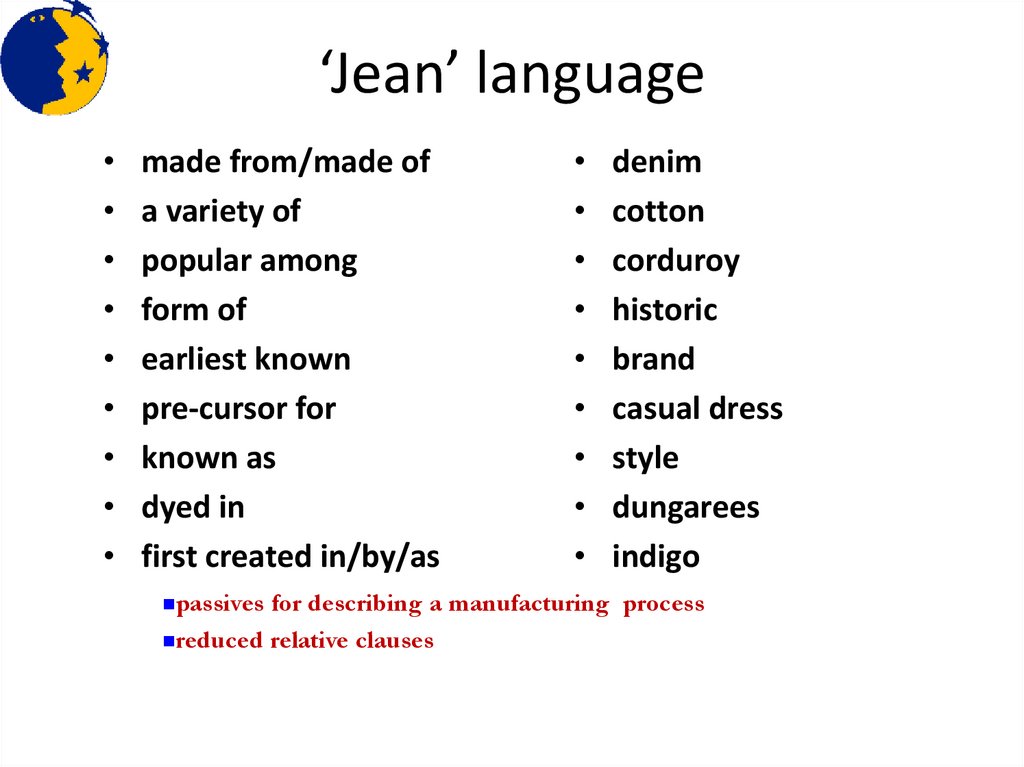











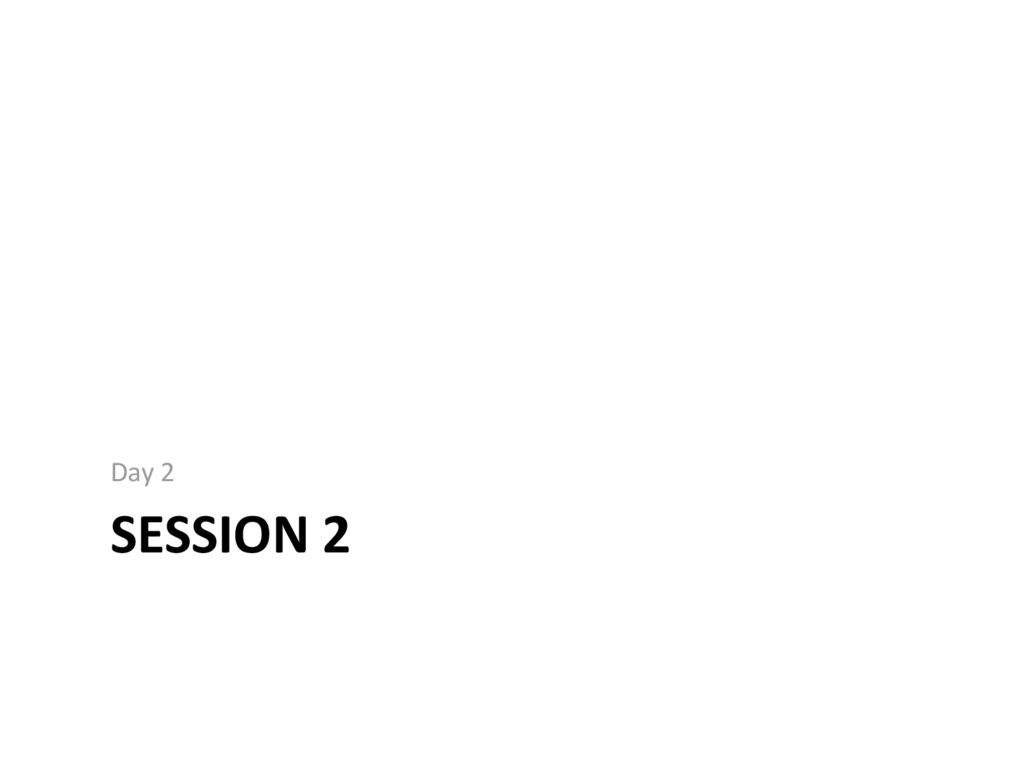
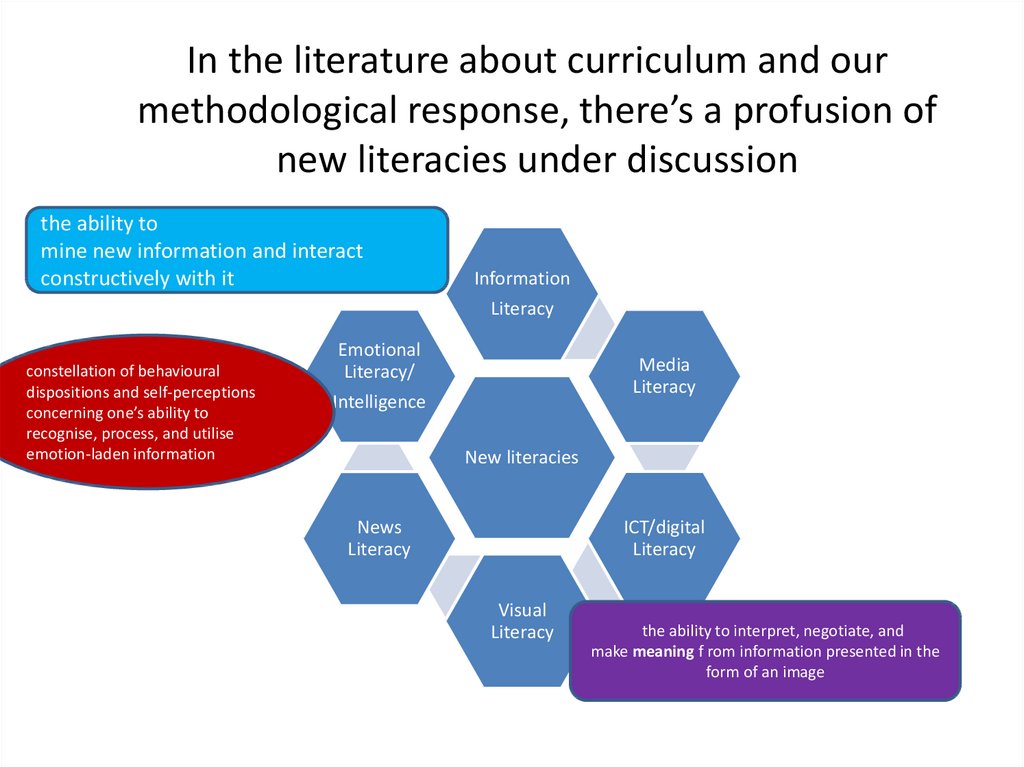


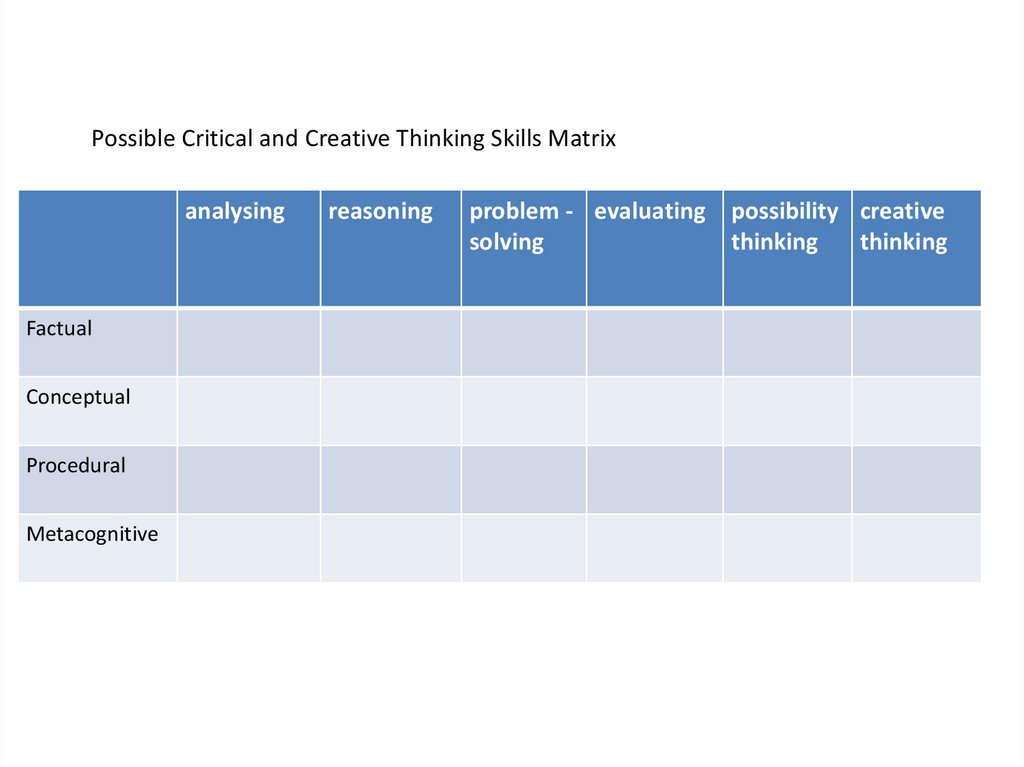

























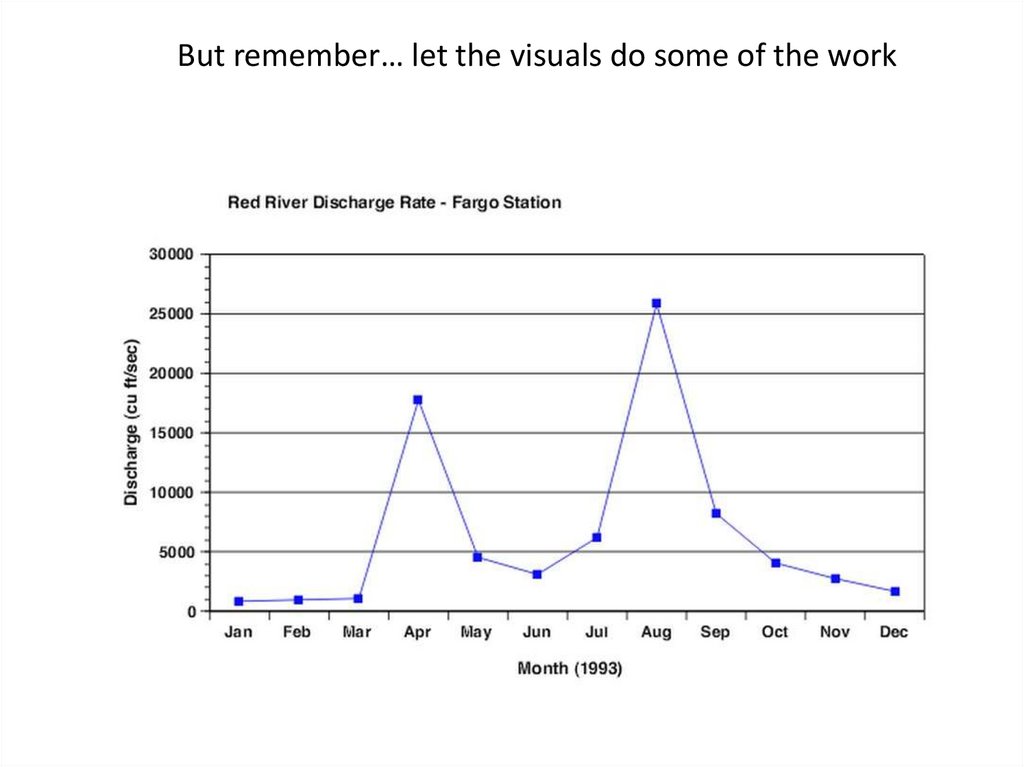


































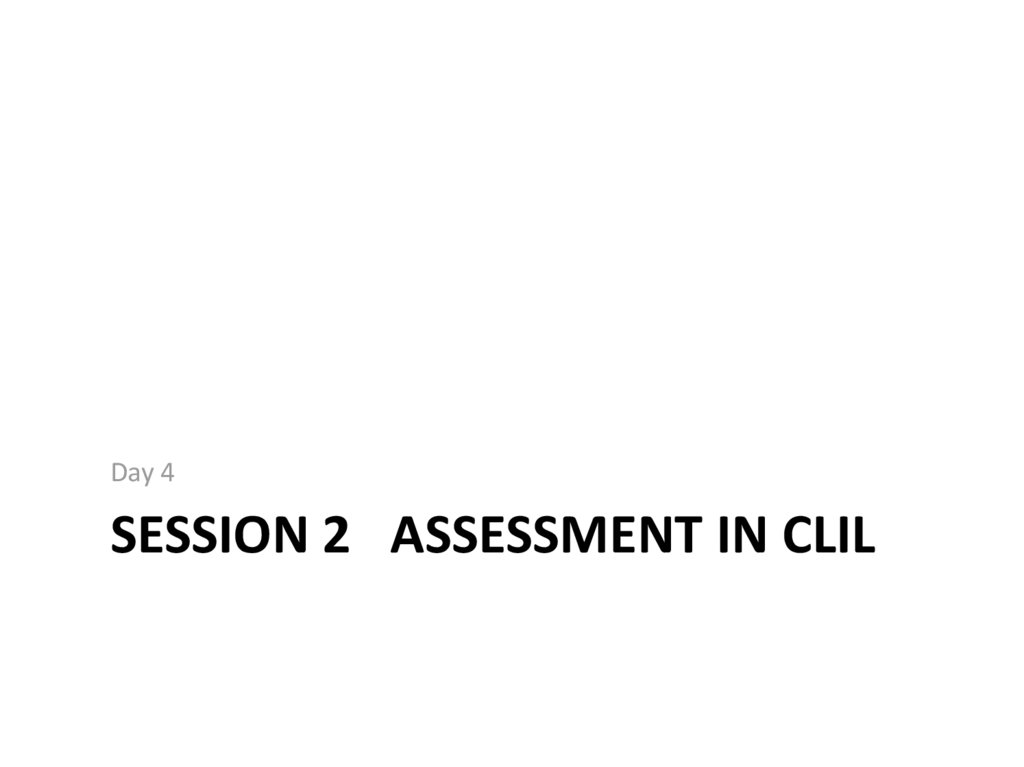


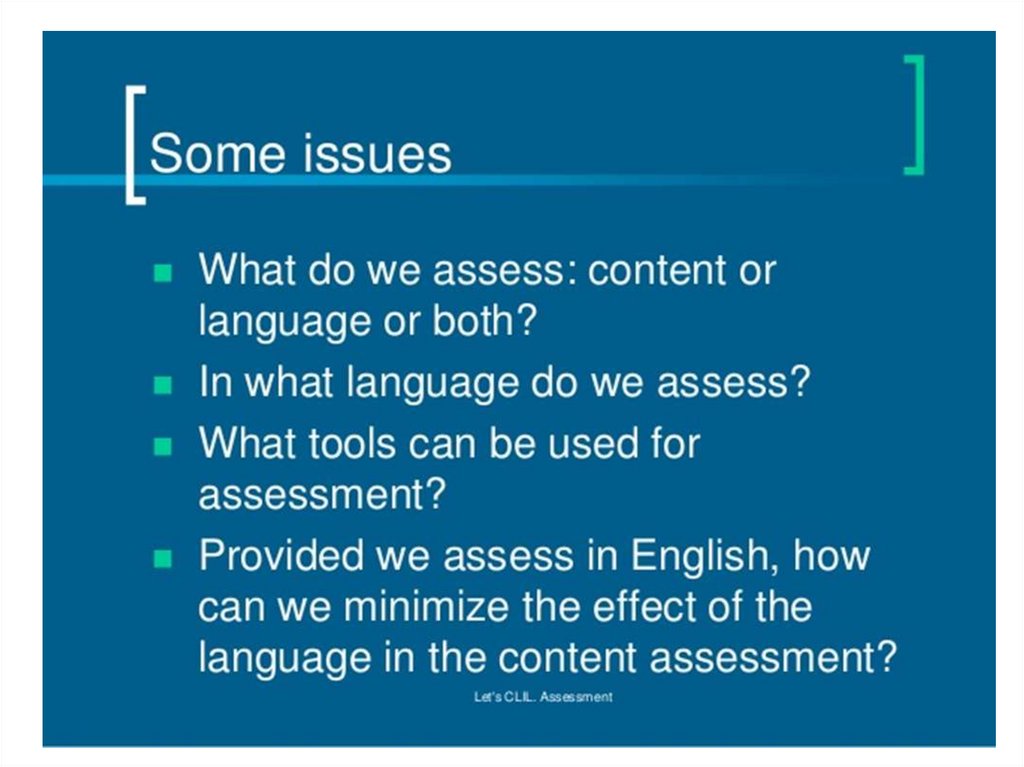































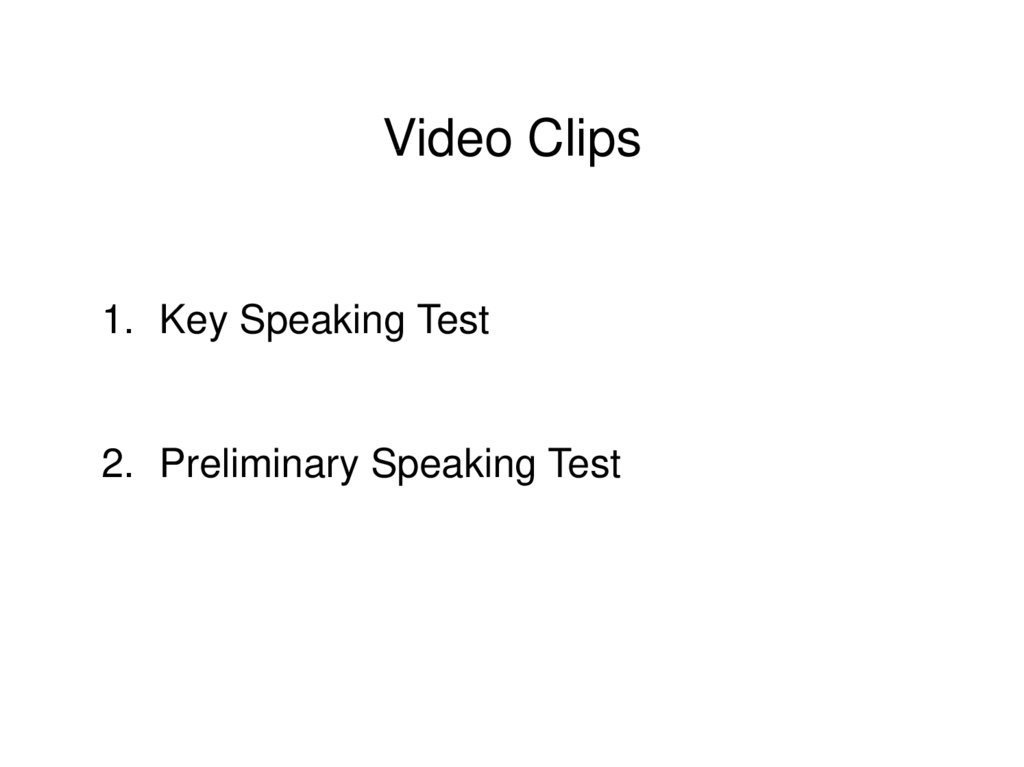

 Информатика
Информатика Образование
Образование








